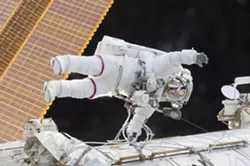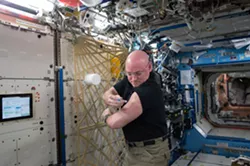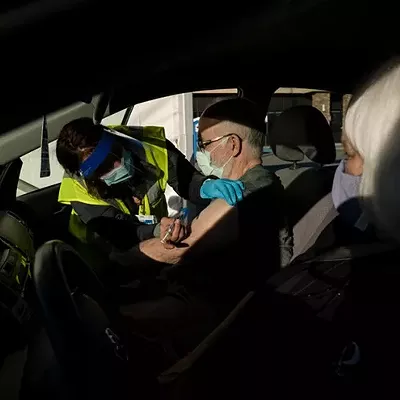
By Carl Zimmer
New York Times News Service
For 340 days, Scott Kelly circled the Earth aboard the International Space Station, gathering data about himself.
Two hundred-and-forty miles below, Scott’s twin brother, Mark, who also served as an astronaut, carried out identical tests. Now, a comparison of these two men has provided an opportunity to learn what happens to the human body in space.

Many of these biological changes seemed harmless, disappearing after he returned to Earth. But others did not correct themselves, provoking concern among scientists.
“The fact that they’re twins really narrows down the alternatives,” said Susan Bailey, a co-author of the new study. “We can say that, as best as we can tell, these changes are due to spaceflight.”
Bailey studied special sections of Kelly’s DNA called telomeres, which sit at the end of chromosomes, protecting them from deterioration.
As people age, their telomeres tend to get shorter.
Strangely, the average length of Kelly’s telomeres increased in space, rather than decreasing, as if his cells were becoming more youthful.

Some of the awakened genes are known to encode proteins that help fix damaged DNA. That would make sense, given that radiation levels in the International Space Station are higher than on Earth.
The strange lengthening of Kelly’s telomeres disappeared after less than 48 hours on Earth. In fact, Bailey and her colleagues started finding many cells with telomeres that were shorter than before Kelly went to space.
Six months after he came back to Earth, 8.7 percent of his genes were still behaving in an altered way.
The researchers also found that Kelly didn’t do as well on his return on cognitive exams.
Another enduring change, scientists found, was a collection of genetic mutations that Kelly gained in space.
Sometimes radiation triggers a type of mutation that makes cells prone to gain still more mutations as they divide. Eventually, the cells may start growing uncontrollably — “taking steps on the road to cancer,” Bailey said.

These two lingering changes — in Kelly’s cognition and DNA — left a number of experts concerned about the risks of a trip to Mars, which could take a year.














